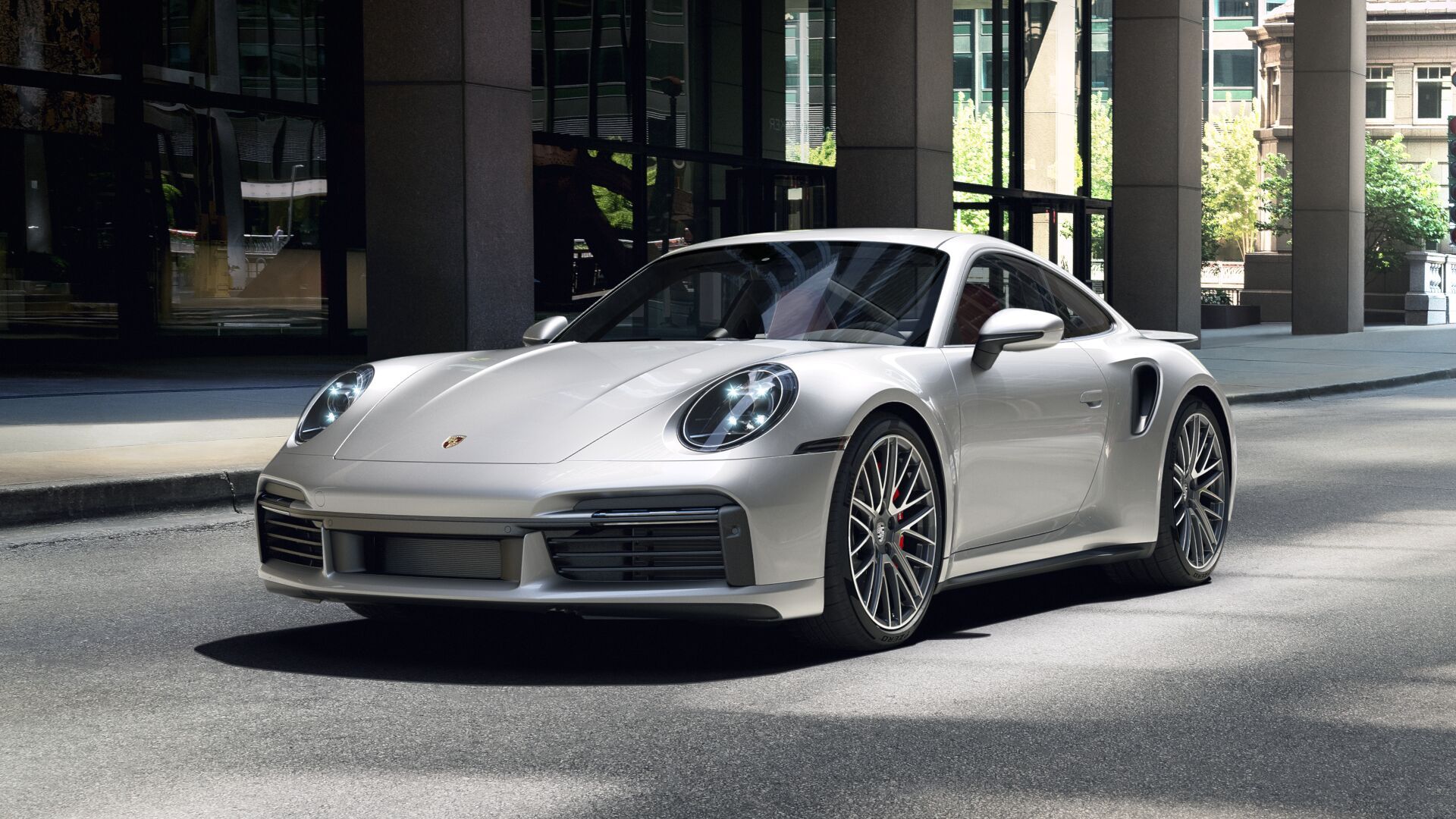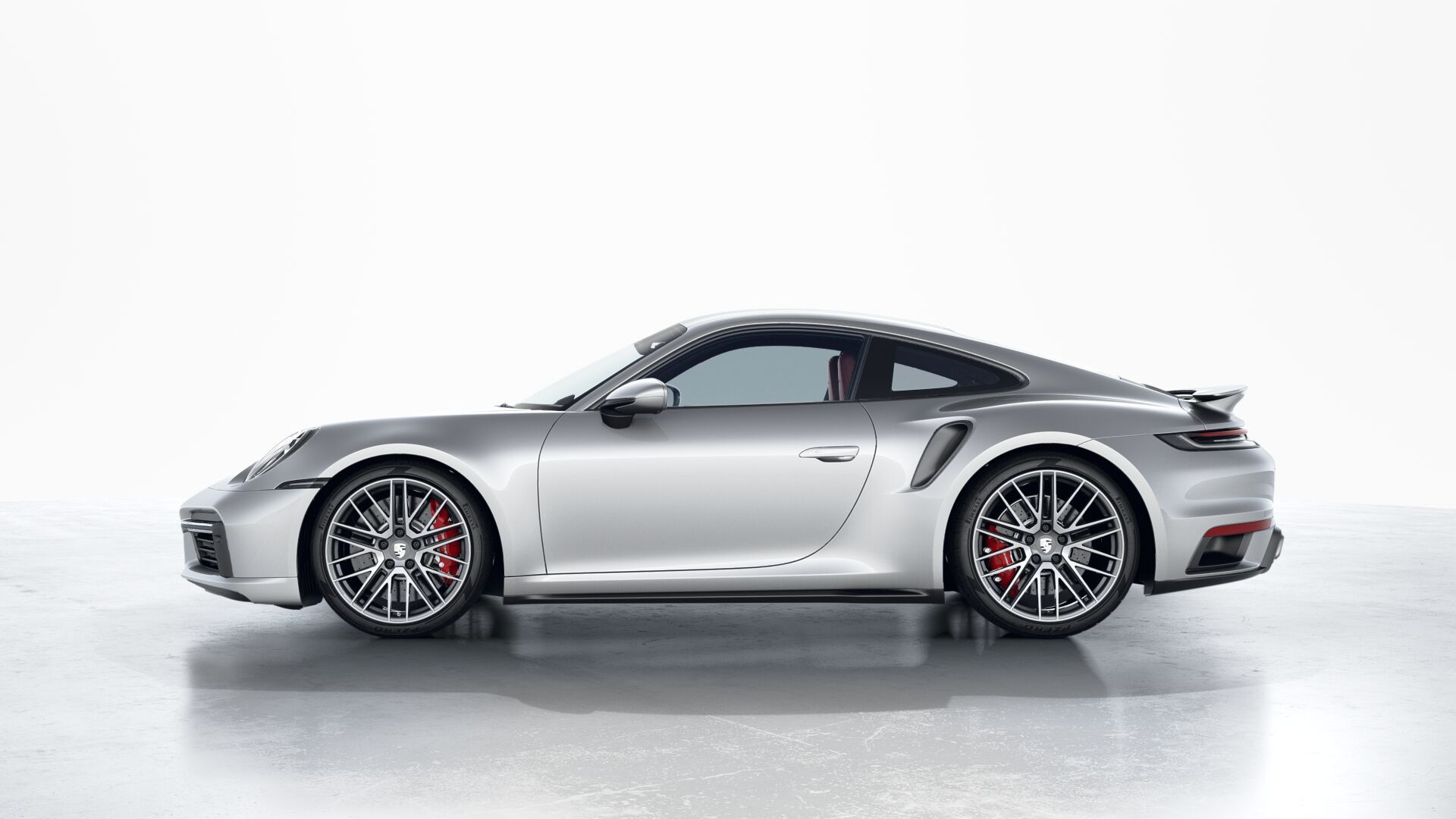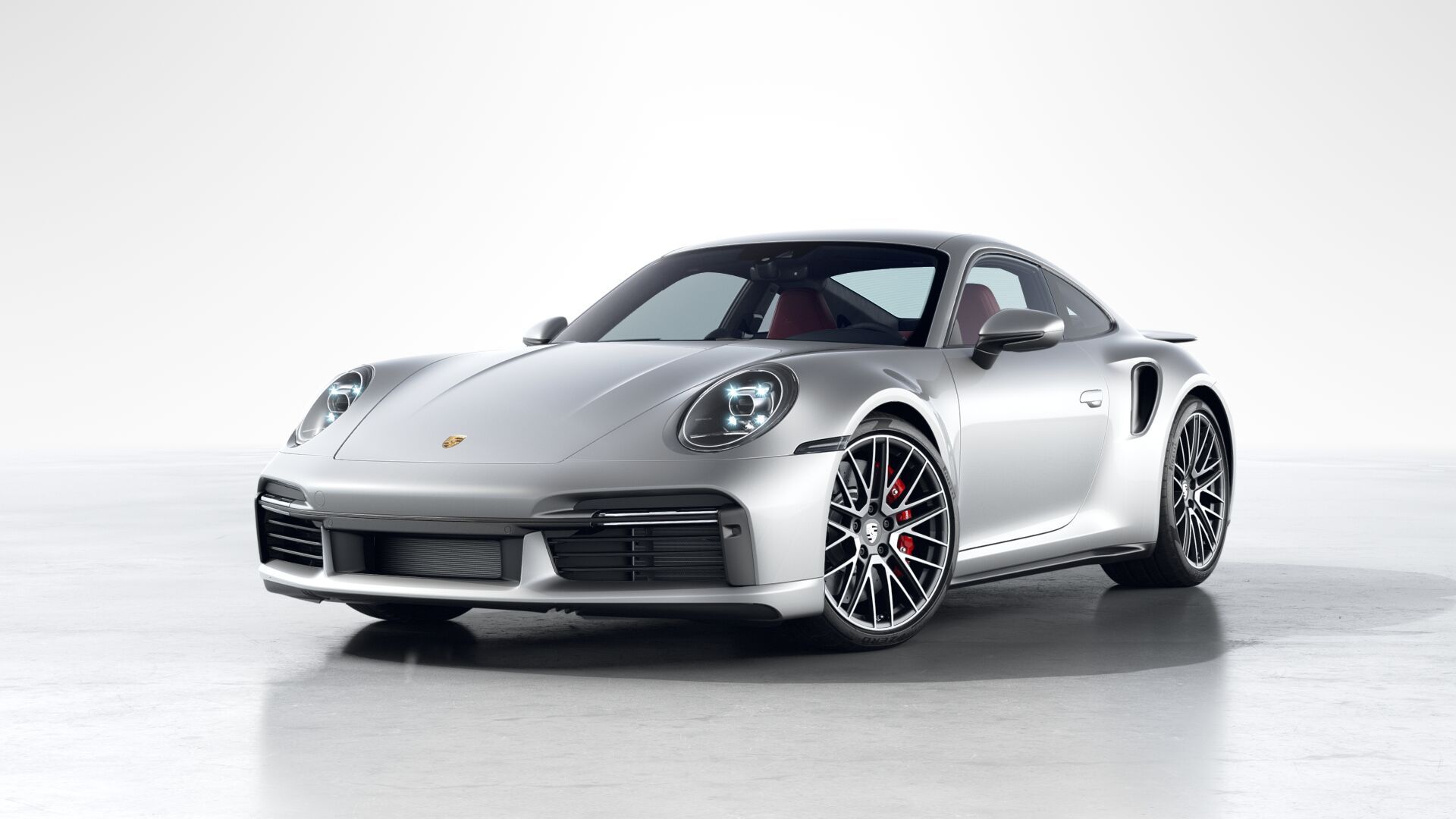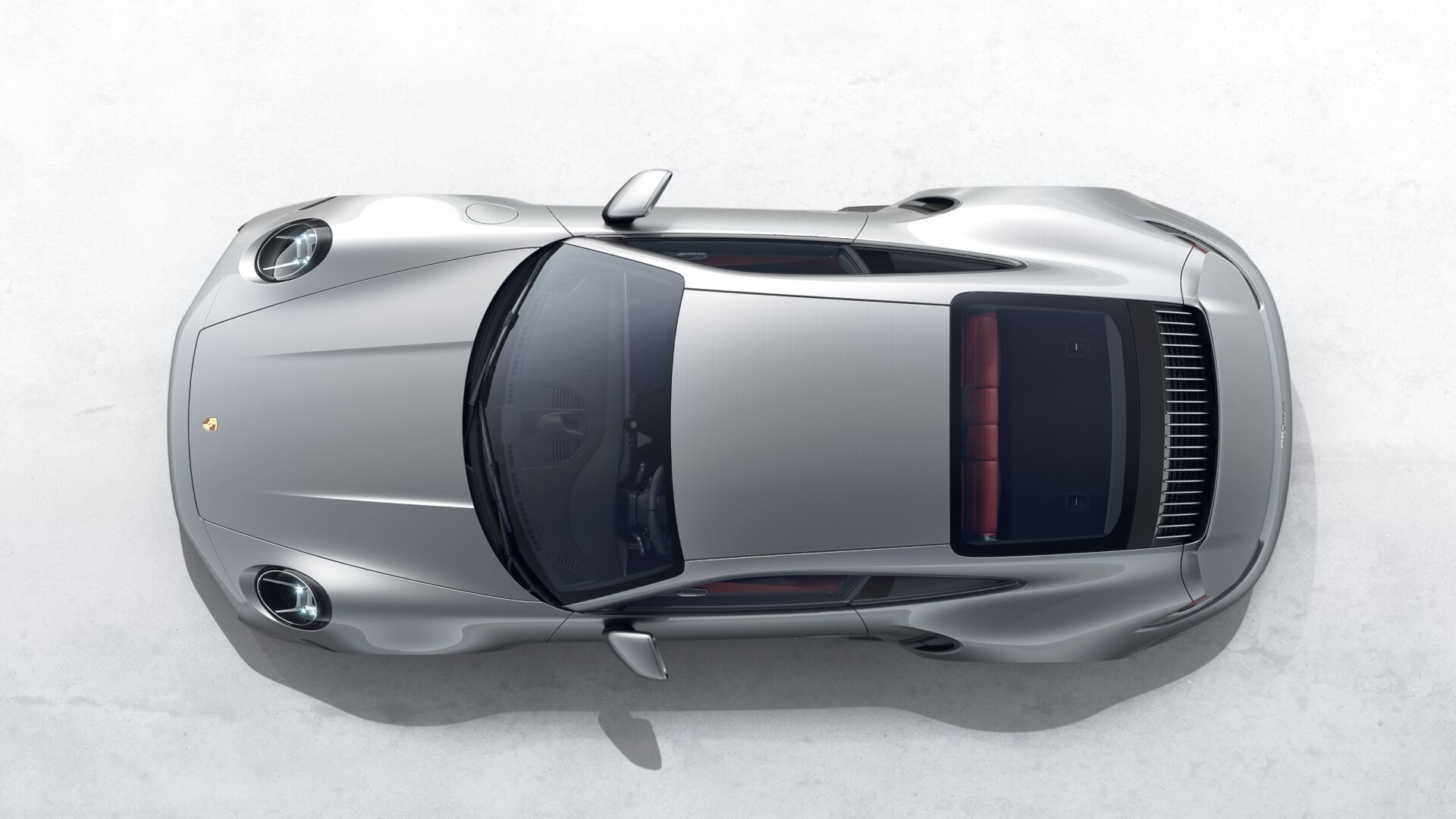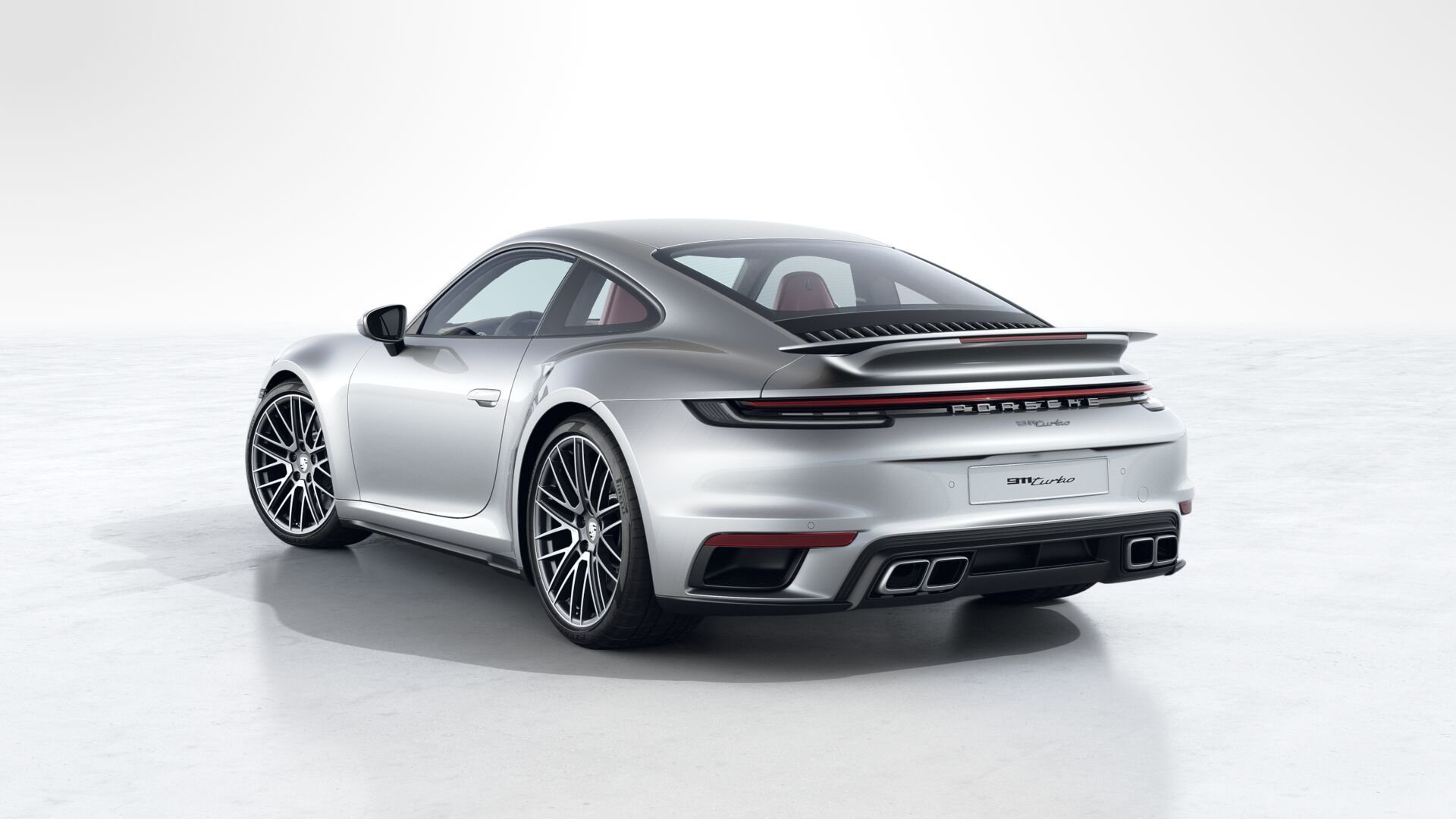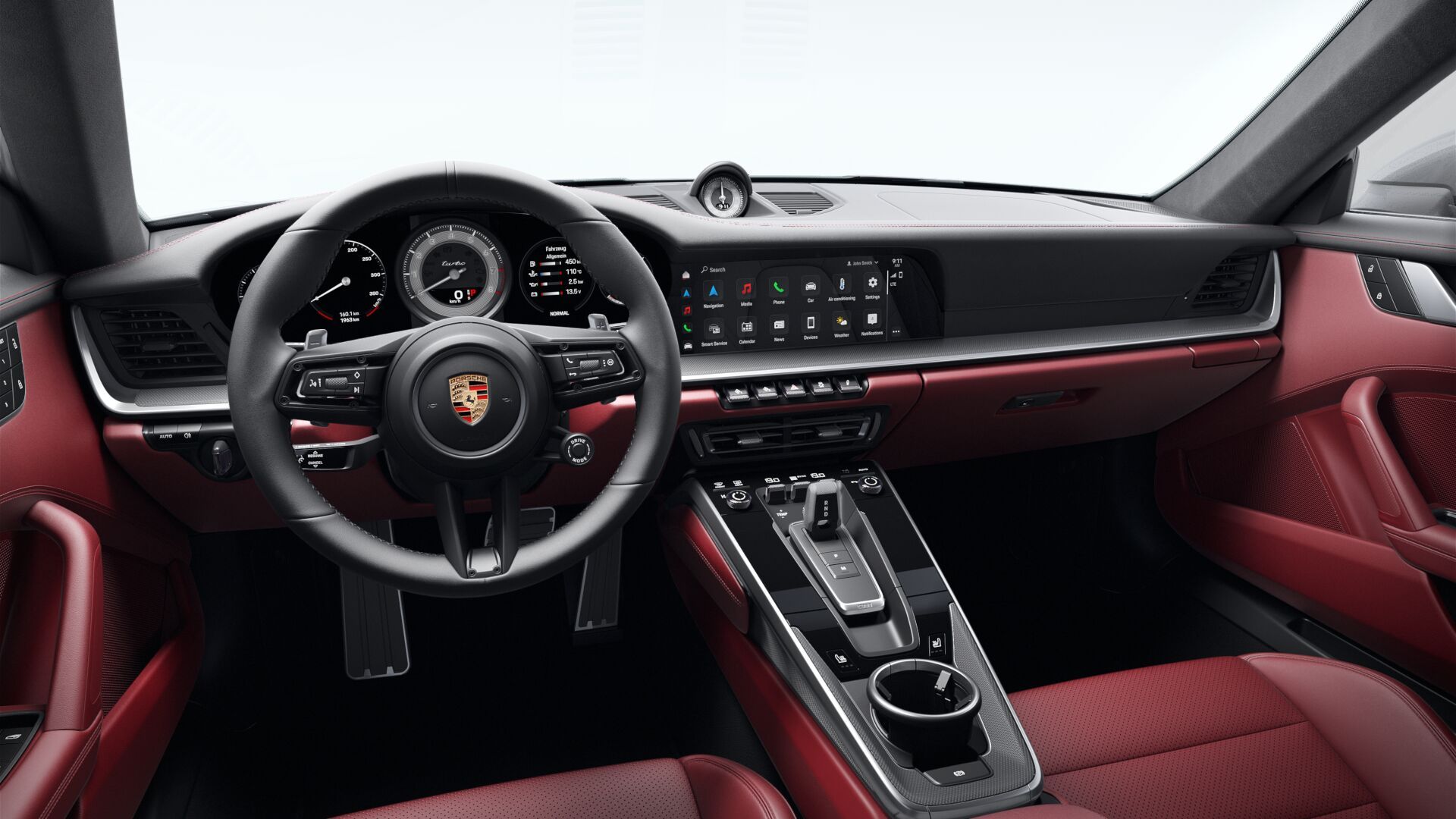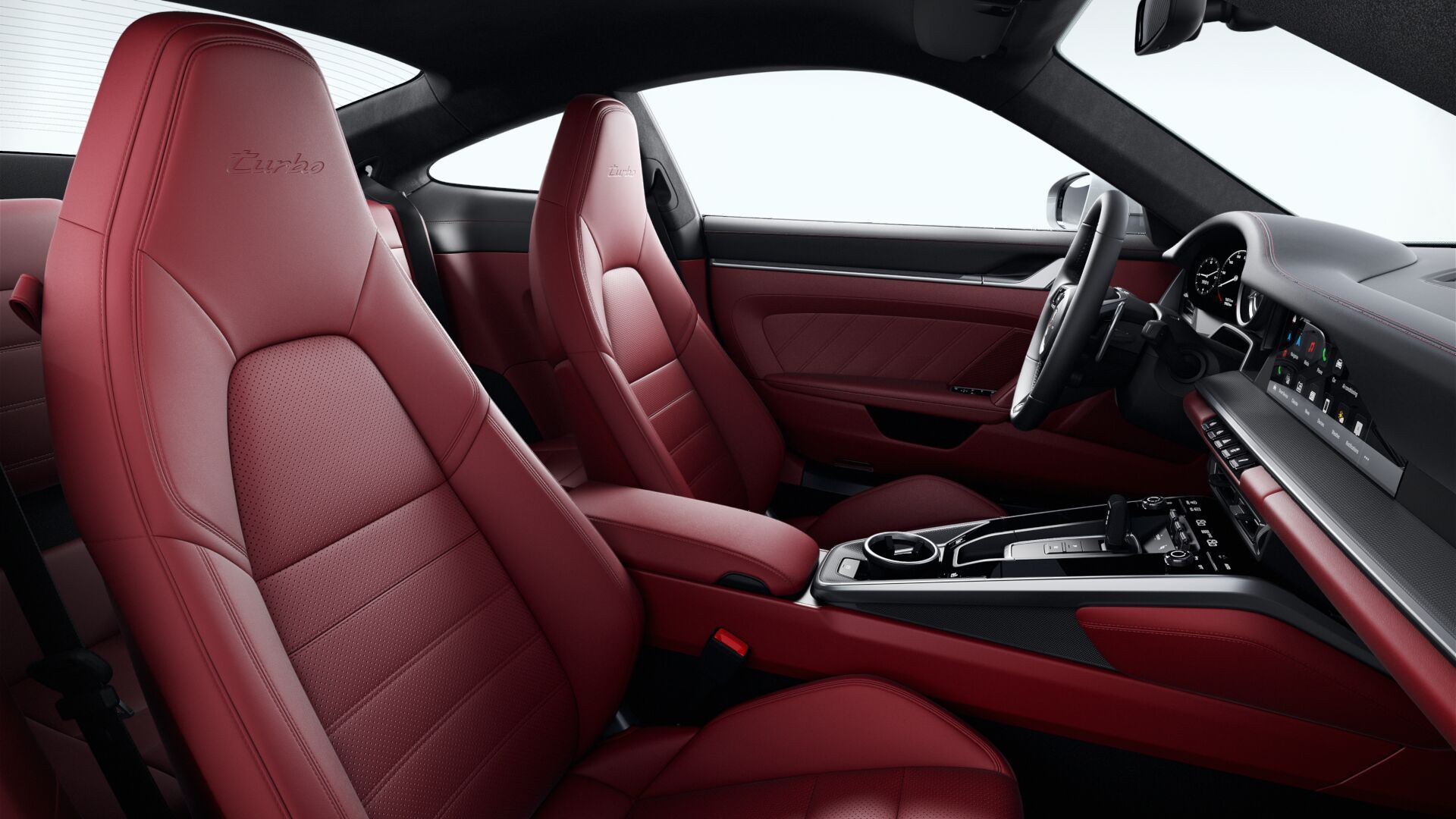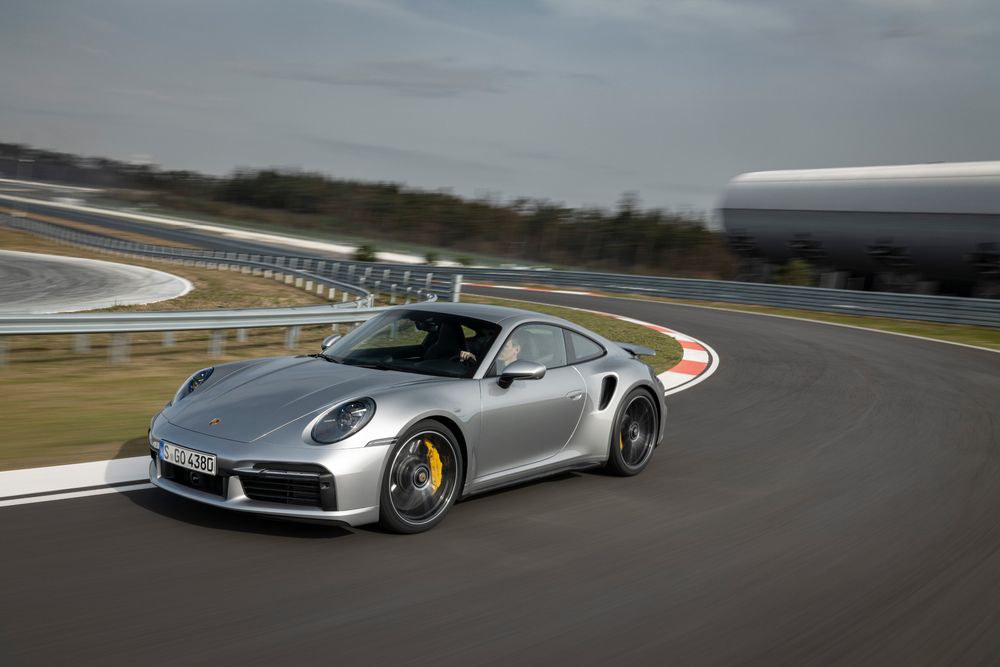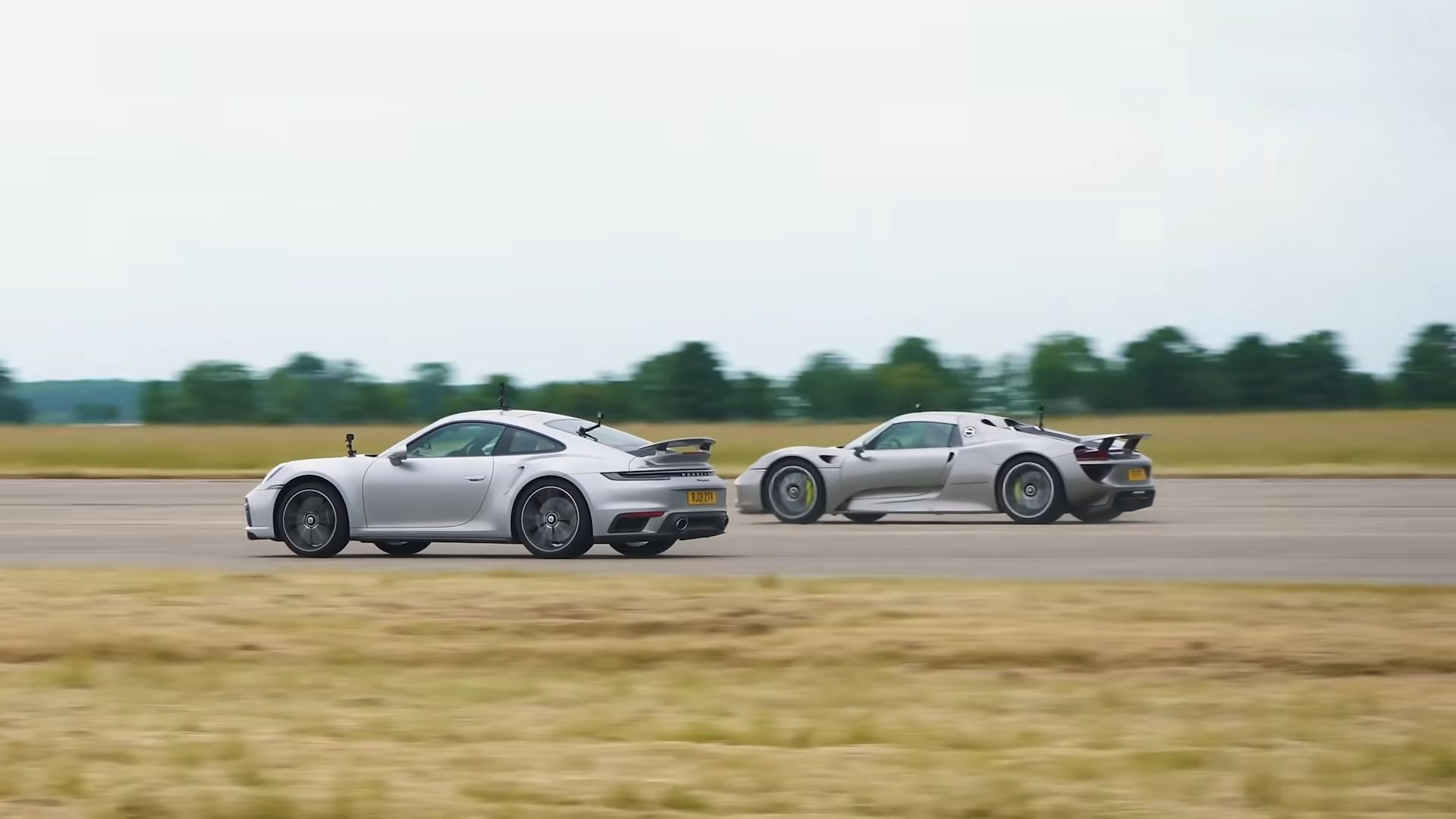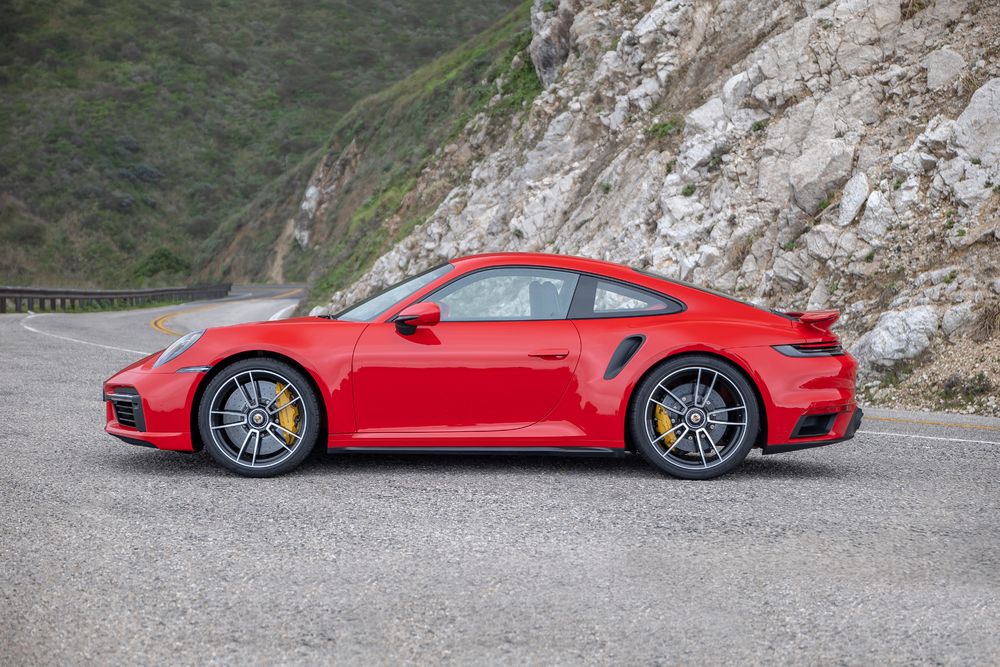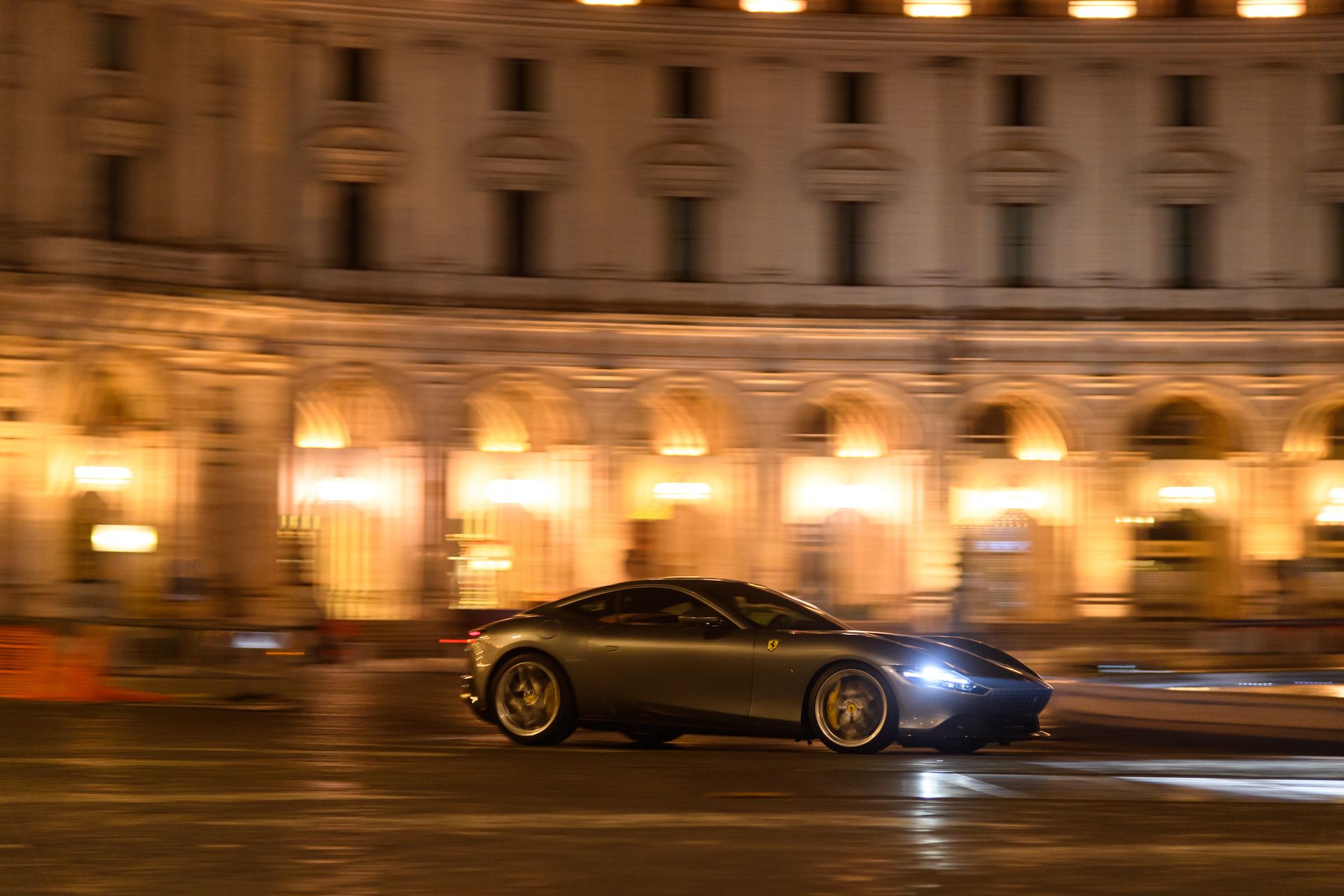The 911 Turbo has been the ultimate intersection of luxury and performance in the 911 lineup for nearly five decades. The Turbo is a Porsche that offers the same practicality as a standard Carrera, but with blistering performance that can rival supercars. It's a car that’s equally at home in both the pit lane at Laguna Seca and the HOV lane in rush hour traffic. The Turbo is all things to all people.
The demands for the Turbo to check every box have led it to change over the years. For what was once nicknamed the ‘Widowmaker’ for its penchant to spin the wrong way round through a corner if you let off the throttle too soon, the latest 911 Turbo has become domesticated with all-wheel drive and sophisticated electronics to the point where anyone can unlock the full potential of the car. This begs the question, has the new Turbo lost its edge?
2022 Porsche 911 Turbo
- Adaptive Aerodynamics
- Launch Control
- 2+2 Seating
- PCM 6.0 Infotainment
- 200+ MPH Top Speed (Turbo S)
- Model: 2023 Porsche 911 Turbo / Turbo S
- Engine: 3.8-Liter Twin-Turbo Flat-6
- Power Output: 572 - 640 Horsepower
- Torque: 553 - 590 Pound-Feet
- Range: 350 Miles
- Transmission: PDK
- Driveline: All-Wheel Drive
- MSRP: $197,200
- MSRP (As Tested): $204,500
- 0-60 MPH: 2.4 Seconds
- Quarter-Mile: 10.9 Seconds
- Sub-3.0 Second 0-60 MPH
- Porsche Build Quality
- Sleek Interior Design
- No Manual Transmission
- 17 MPG (Combined)
- Significant Price Increase Over 991 Generation
Porsche 911 Turbo Performance And Capability
Not many four-seat cars can exceed 200 mph, and fewer still have only six-cylinders. Yet, those aren’t even the most impressive attributes of the Turbo. Porsche has bored out the Carrera’s flat-six engine to 3.8-liters and fitted it with twin turbochargers. The result is 576 horsepower, nearly 200 more than the Carrera on which it's based. The 500-horsepower club is getting a bit crowded these days, so if you want something more impressive, Porsche has you covered with the Turbo S, which squeezes 640 horsepower out of the same power plant.
With so much power to put down, the Turbo only comes with all-wheel drive. The added traction enables the Turbo to launch to 60 mph from a standstill in just 2.7 seconds. The S bests that by another 0.1 of a second. The cabriolet variants of each of the Turbo model's only suffer by 0.1 seconds to 60. A small price to pay for the thrill of the wind in your hair. Though you may want to raise the roof before pushing it on the Autobahn. With a top speed of 198 mph–and 205 mph for the S–it certainly won’t be enjoyable.
|
Trim |
911 Turbo |
911 Turbo S |
|---|---|---|
|
Engine |
3.8 L Twin-Turbocharged Flat-6 |
3.8 L Twin-Turbocharged Flat-6 |
|
Horsepower |
572 @ 6,750 RPM |
640 @ 6,750 RPM |
|
Torque |
553 @ 2,250 RPM |
590 @ 2,400 RPM |
|
Transmission |
8-Speed PDK |
8-Speed PDK |
|
Drive Layout |
All-wheel drive |
All-wheel drive |
|
0-60 MPH |
2.7 seconds |
2.6 seconds |
Exterior Design
It is a longstanding tradition for Porsche to take the design of the Carrera and turn the dial up to 11 for the Turbo. With each generation, the Turbo goes back to training camp, and returns ever more ‘swole'. This time around, Porsche put the Turbo on a strict diet of protein and creatine supplements. It has a wider stance, a large rear wing, adaptive aerodynamics all around, and bulging rear wheel arches.
A common gripe of the standard 992 Carrera is its front fascia, consisting of a rather bland elongated rectangle, stretched from end to end. If every 911 has a face, some have donned grins and others have looked menacing, but the Carrera looks like it's forcing a grin for the camera. Luckily, the Turbo remedies this with an aggressive front fascia design.
One of the reasons for the wide rectangular mouth on the Carrera is to feed the large front radiators. The Turbo requires even more airflow, so it retains the wide openings but with a distinctive flare. Better still is the new front splitter. A glance at a 911 Turbo on the street, and you’d be hard-pressed to find it. That’s because the new splitter is adaptive, retracted at low speeds to ease curb anxiety, only showing its face at high speed–a disappearing act that would make Houdini jealous.
Around the back things are just as radical. The signature air intakes on the rear wheel arches have a new purpose for this generation. As Porsche notes in its press release, the intakes “now draw induction air rather than the cooling air they did before, while the charge air intercoolers are now positioned directly in the airflow under the rear lid.” Subtle tweaks make all the difference.
|
Standard |
White |
$0 |
|
Black |
$0 |
|
|
Jet Black Metallic |
$0 |
|
|
Carrara White Metallic |
$0 |
|
|
Gentian Blue Metallic |
$0 |
|
|
GT Silver Metallic |
$0 |
|
|
Agate Grey Metallic |
$0 |
|
|
Aventurine Green Metallic |
$0 |
|
|
Special |
Ruby Star Neo |
$3,270 |
|
Carmine Red |
$3,270 |
|
|
Shark Blue |
$3,270 |
|
|
Python Green |
$3,270 |
|
|
Arctic Grey |
$3,270 |
|
|
Chalk |
$3,270 |
|
|
Ice Grey Metallic |
$3,270 |
|
|
Custom |
Paint-to-Sample |
$12,830 |
|
Length |
178.5 in |
|
Width |
74.8 in |
|
Height |
50.9 in |
|
Wheelbase |
96.5 in |
|
Curb Weight |
3,635 lbs - 3,790 lbs |
Interior Design
With every new generation, the interior of the 911 has gotten increasingly busier. New features require extra controls to be squeezed in wherever space can be found. This came to a tipping point in the last generation when the center console had more buttons than the control panel of the Millennium Falcon. Happily, Porsche has finally done its spring cleaning.
The new 911 Turbo has a minimal interior design, with barely any physical controls. Seated prominently in the middle of the dash is Porsche’s latest infotainment system, PCM 6.0. The widescreen display is similar to the one you can find in the Panamera and Cayenne. With crisp graphics and an excellent user interface, it’s one of the best infotainment systems available today.
Most functions are now accessed through the central display. Which has enabled Porsche to clean up the center console and give it a minimal aesthetic. This newly minted prime real estate is reserved for only the most important controls, such as climate and volume knobs. Furthermore, the center console has a slick black finish, hiding touch capacitive buttons which are only visible when backlit.
As you’d expect of a product made in Zuffenhausen, the materials in the 911 Turbo are second to none. Every touchpoint feels refined, with no scratchy plastics to be found. Plenty of luxury brands create sumptuous interiors full of exotic materials, but that typically comes at the cost of durability. Porsche consistently manages to use high-end materials that both feel supple and have the everlasting durability of a Nokia 3310.
This generation has a leg up on all previous 911s because its interior is equipped with one feature never before seen in nearly 60 years–a dedicated cup holder! That’s right, Porsche finally caved and placed a full-size cup holder in the center console. Now, the driver doesn’t have to reach the passenger side of the cabin to use the satisfyingly over-engineered pop-out cup holders of old.
Another first a driver will notice is the digital instrument cluster. This is the first 911 to forgo physical instrumentation, but it stays true to its predecessors with an analog tachometer in the center, a hallmark of the 911. It is flanked on either side with customizable digital screens. The left screen displays the speedometer, time, and temperature, while the right screen displays vehicle information such as tire pressure, drive modes, and best of all, Google Maps.
Price, Availability, and Ownership
They say it's lonely at the top, and with a base price of $182,900, you certainly won’t run into a fellow Porsche 911 Turbo owner often. The ballistic Turbo S costs significantly more at $216,100, and weekly cardiologist checkups are not included. Despite this, we believe both 911 Turbo variants present good value for the supercar-level performance you get. The Ferrari Roma costs $5,000 more than the Turbo S, has fewer horsepower, and is nearly a second slower to 60 mph.
When it comes to Porsche however, the base MSRP is just the beginning. The options are à la carte, and buyers at this price point are going to want all the trimmings–or none if they opt for the $11,400 lightweight Package, shaving 66 pounds by removing standard conveniences like heated seats. Furthermore, things you’d expect to be standard are optional, like the 18-way Adaptive Sport Seats that will set you back $1,150. Be prepared to spend at least an extra 5-10% on options.
|
Trim |
Price |
|
911 Turbo |
$182,900 |
|
911 Turbo S |
$216,100 |
Main Competition
One of the advantages of the 911 is that it has no direct competitor, even more so with the Turbo variants. Many have tried, but none can quite match the blend of practicality and performance. That said, the Audi R8 V10 is the closest threat to the standard Turbo. The Audi costs over twenty thousand less than the Porsche, coming in at $158,600. But that savings comes at the cost of power, with only 562 horsepower. If you want Quattro then you have to spend an eye-watering $209,700.
The Turbo S is an even harder nut to crack because its two competitors are on opposite extremes of the Porsche. On one hand, you have the McLaren Artura. The two-seat supercar that costs over twenty thousand more, has more power and better performance but doesn’t have the practicality of the 911.
On the other hand, the Ferrari Roma is a recent addition to the market that might be one of the few cars that could tempt a die-hard 911 Turbo S owner to look elsewhere. It matches the grand touring capabilities and practicality of the Turbo, yet doesn’t have the same performance edge. Not to mention it costs $243,360 and has almost 30 fewer horsepower.
There’s a reason that 911 owners are one of the most brand-loyal sports car buyers in the market. The Porsche 911 Turbo is an impressive automobile. One that has incredible value, mind-blowing performance, and is built to the highest standards. For nearly five decades the 911 Turbo has been a formidable opponent to the established supercar brands, and it will continue to do so for many years to come.
FAQ
Q: How much does a 911 Turbo cost?
The 911 Turbo starts at $182,900 for the coupe, all the way up to $216,100 for the range-topping Turbo S.
Q: How fast is the 911 Turbo?
The 911 Turbo has a top speed of 198 mph, while the Turbo S can reach 205 mph.
Q: How much horsepower does a 911 turbo have?
The 911 Turbo makes 572 horsepower, and the more powerful Turbo S variant produces 640 horsepower.
Q: What engine is in the 911 turbo?
The 911 Turbo has a 3.8-Liter Twin-Turbocharged Flat-Six engine.

